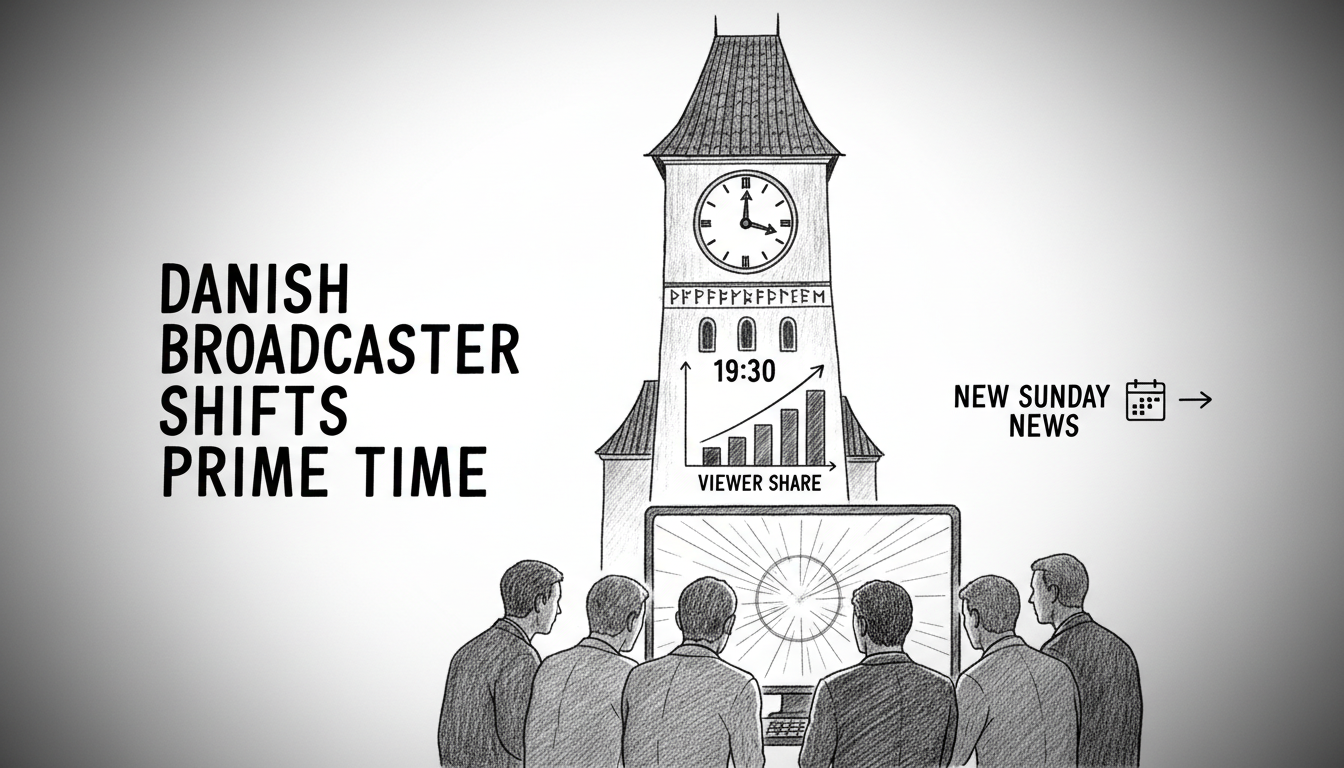Denmark's major commercial broadcaster is making strategic changes to its evening news schedule that will reshape television viewing patterns across the country. The network will move its late evening news program from 9:30 PM to 8:50 PM, creating direct competition with the public broadcaster's established 9:00 PM news slot. These scheduling adjustments take effect in early January.
Content director Lotte Lindegaard explained the reasoning behind these changes in an official statement. She emphasized the broadcaster's commitment to bringing Danes together around important topics and creating shared conversations. The network prioritizes live news and unifying programs during prime time while making Danish current affairs content more accessible throughout the day.
This scheduling shift represents more than just a time change. It reflects broader transformations in Danish media consumption habits and the ongoing competition for viewers' attention. By moving the news program earlier, the broadcaster aims to reach more viewers when they're most engaged with current events.
Lindegaard noted that traditional television and live news remain crucial for many Danish households. The network provides trustworthy public service news when Danes need it most, maintaining its role in the national conversation despite changing media landscapes.
The rescheduled main channel news will also affect regional programming. Regional evening broadcasts will now air at 9:20 PM from Monday through Thursday instead of the previous 10:00 PM slot. This creates a more cohesive news flow across the broadcaster's entire network.
These changes occur against the backdrop of Denmark's evolving media environment. Danish society increasingly values accessible, reliable news sources that fit modern lifestyles. The broadcaster's decision reflects understanding that news consumption patterns have shifted, with many viewers preferring earlier access to daily news summaries.
The timing adjustment also introduces an additional Sunday news broadcast at the same 8:50 PM slot. This expansion of weekend news coverage responds to growing demand for consistent news access throughout the week.
This strategic move demonstrates how Danish media companies are adapting to maintain relevance in a competitive landscape. The earlier time slot positions the broadcaster to capture viewers before they switch to streaming services or other evening activities. It represents a calculated effort to preserve traditional television's role in Danish daily life while acknowledging changing viewer habits.
The overlapping schedule with the public broadcaster's news program sets up direct competition during peak viewing hours. This could influence how Danes consume news and which sources they trust for daily information. The outcome will reveal much about contemporary Danish media preferences and the future of broadcast journalism in the welfare state.
Danish integration policies often emphasize the importance of shared information sources for social cohesion. Accessible news programming plays a vital role in keeping diverse communities informed and connected. These scheduling changes could affect how new residents and established communities engage with Danish current affairs.
The welfare system's emphasis on an informed citizenry makes reliable news access particularly important in Danish society. These broadcast adjustments represent the media industry's response to maintaining that accessibility in a rapidly changing digital environment.

